Cherax aquarium crayfish - keeping in the aquarium
Cherax crayfish - keeping in the aquarium
The wonderfully pretty large crayfish of the genus Cherax not only have impressive claws, but they are often also fascinatingly coloured. Recently, several first scientific descriptions have been published, and intensive research is currently underway.
Where do crayfish of the genus Cherax come from?
Crayfish of the genus Cherax are native to Papua New Guinea, Indonesia, New Zealand and Australia. They need somewhat higher temperatures in the aquarium and - unlike many North American species - no cold spell in winter. Temperatures below 10 °C are not tolerated. In their native waters, they often live in soft water with a pH of about 6.5, but they also feel comfortable in harder water.
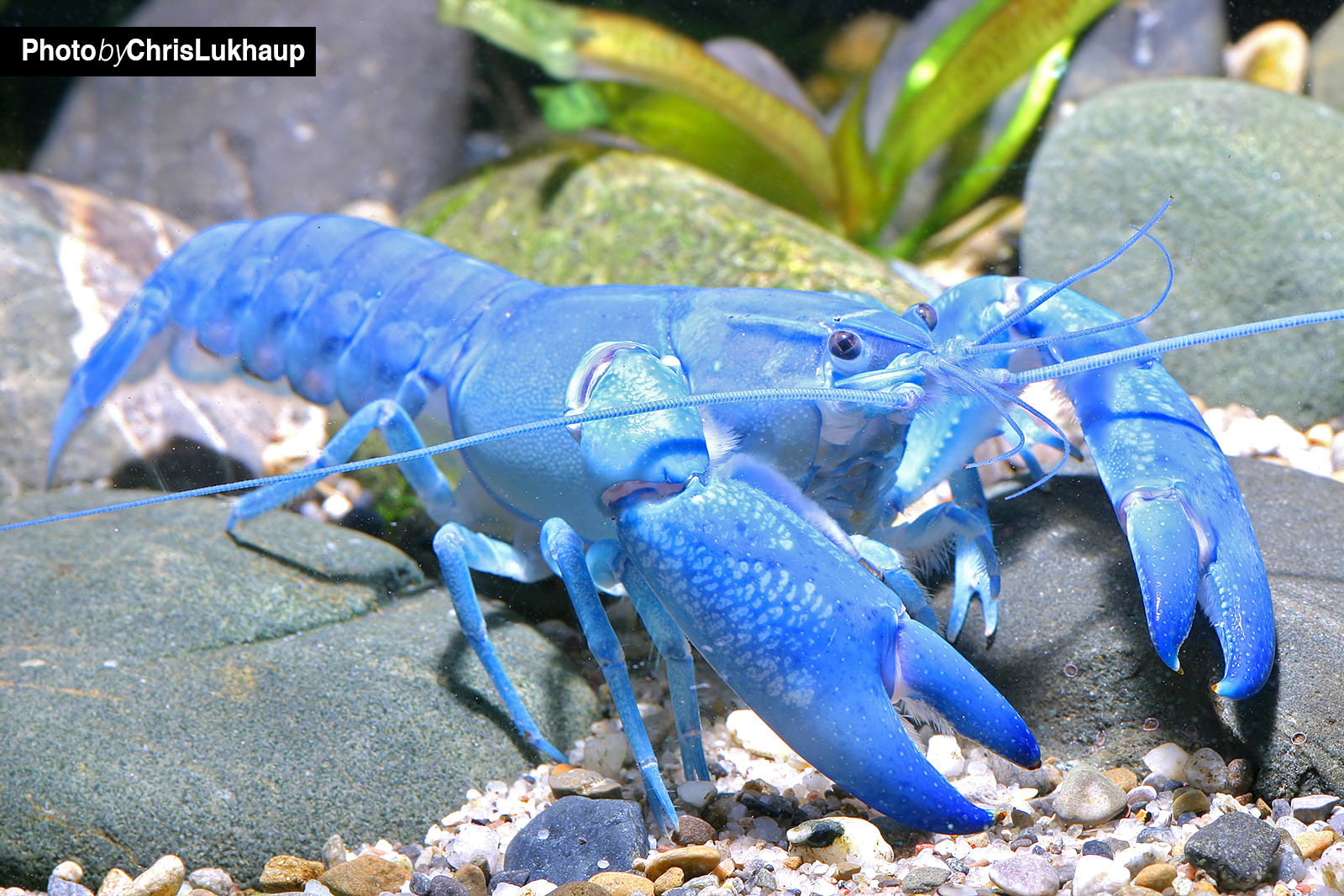
Can I keep Cherax with other crayfish?
As a general rule, crayfish of the genus Cherax should never be kept together with American crayfish such as Procambarus, Cambarus, Cambarellus and so on, as the latter can be carriers of the crayfish plague. They themselves are largely immune to the pathogen, but 100% of cherax crayfish affected by the disease die. The highly contagious pathogen is transmitted via water, where it can survive for up to six weeks without a host (i.e. also via wet landing nets, beware!).
Can they be kept together with shrimps?
Cherax can be kept together with shrimps without any problems. The situation is somewhat different with snails, which are a highly welcome protein snack for the crayfish and also occur in their natural food spectrum. A very productive snail such as Marisa cornuarietis is a good choice for keeping in a crayfish tank, so the animals always have access to live food.
Can Cherax be kept with fish?
They can be kept with fish to a limited extent. Bottom-dwelling fish such as catfish occupy the same territory, which can lead to problems. (Cichlid) perch and other larger predatory fish stress the crayfish so much that they can no longer come out of their hiding places. After a moult, the crayfish is still soft for a few hours (the so-called butter crayfish), then it is easy prey for them. You can occasionally socialise crayfish with smaller fish that do not sleep on the bottom, depending on their character. Curious fish, however, will be threatened and even nipped once. Weak and sick fish are welcome prey for crayfish. Crabs and large-armed shrimps will kill even seemingly physically superior crayfish after moulting at the latest.
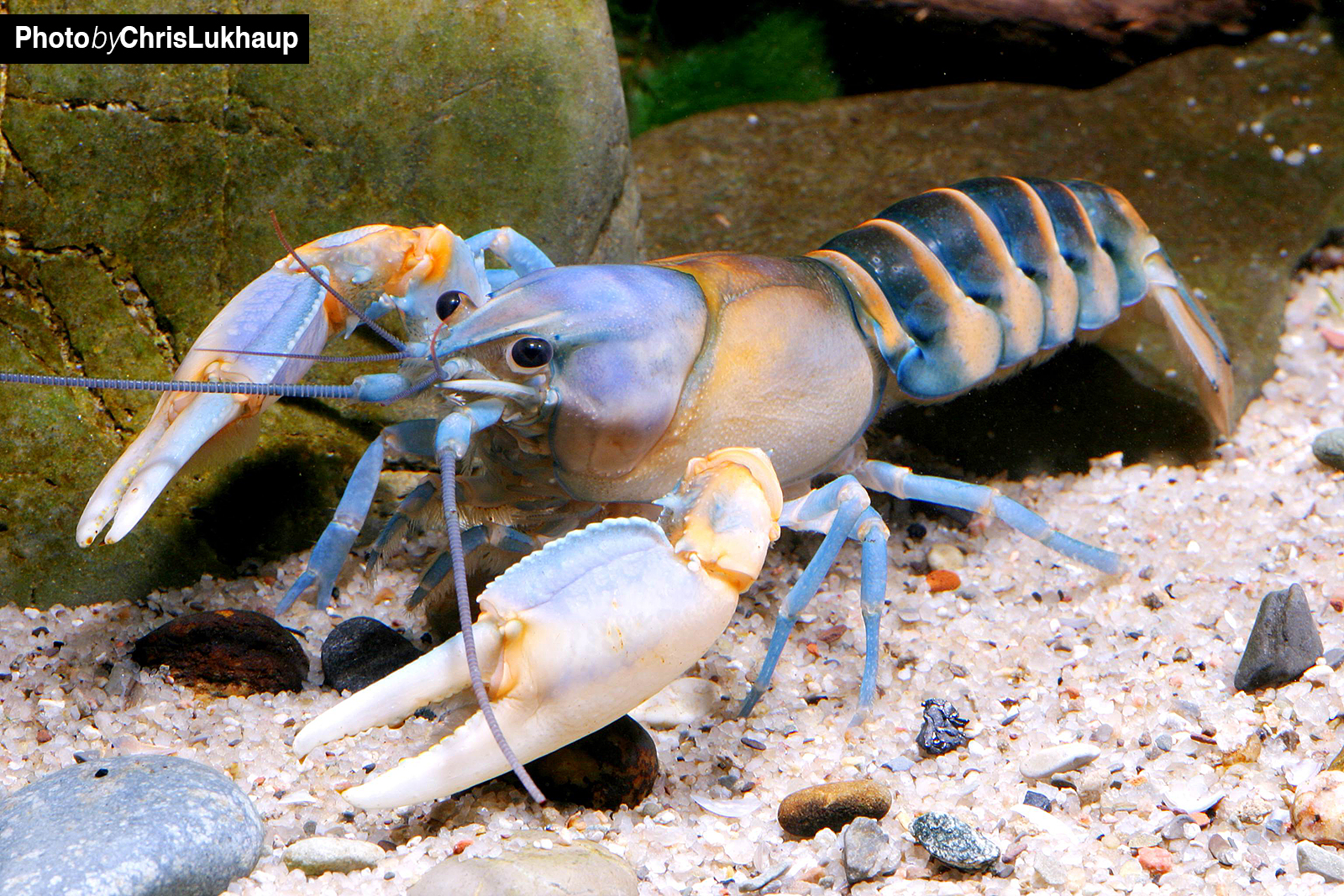
Social crayfish?
Cherax are not quite as solitary as other crayfish species, you often see males and females sitting "scissors to scissors" or wandering through the aquarium. A good structure is nevertheless a must, so that the animals can move out of each other's way or retreat if necessary. Special crayfish burrows are also very suitable here. The aquarium should be completely covered with a relatively heavy lid, as crayfish are true escape artists, are excellent climbers (e.g. on cables) and can also exert considerable strength.
Breeding and reproduction in the aquarium
Fertilised Cherax females carry their 100 to 400 eggs (depending on the species) under their abdomen for four to six weeks until hatching. The abdomen is folded under and rolled up for protection. The hatched young crayfish also live under the mother's tail for a few more days until they finally leave her and live independently. The young crayfish are partly cannibalistic and therefore need many hiding places in the form of foliage, a brick or shrimp tubes. Cherax can have offspring up to four times a year.
Sex differences / sex determination
It is relatively easy to distinguish the sexes of Cherax. To do this, turn the crayfish on its back or place it in a jar with a glass bottom. The females have their gonopores (sexual orifices) at the base of the third pair of walking legs, in males they are at the base of the fifth, last pair of walking legs.
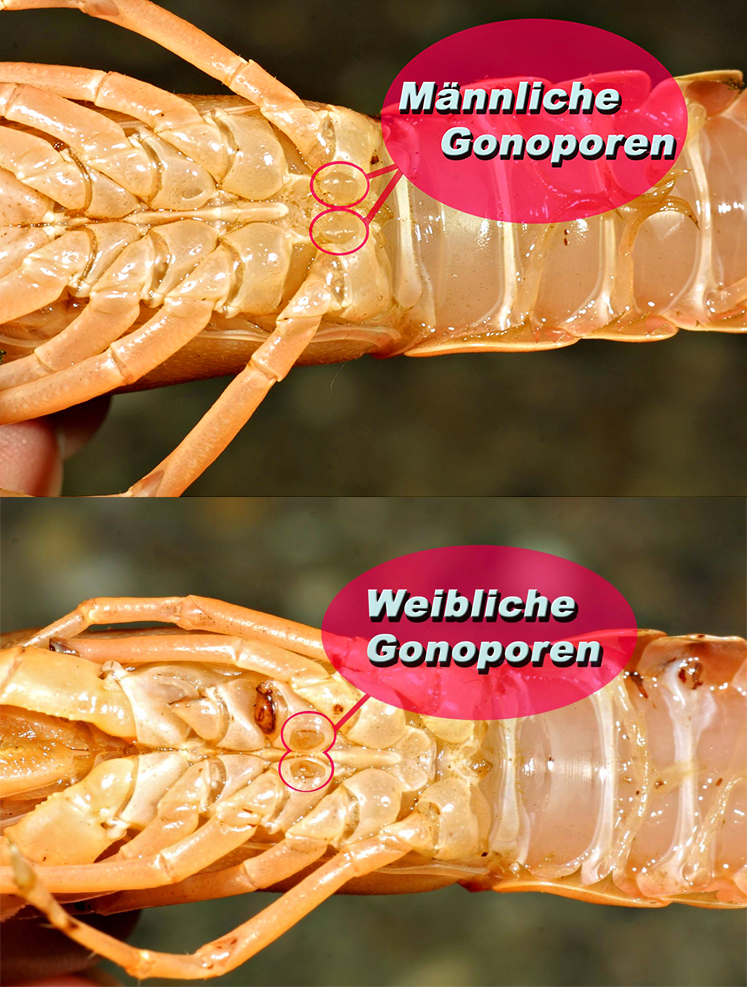
Cherax tend to be crepuscular and nocturnal, but after a period of acclimatisation they may wander around the aquarium during the day, and some become so tame that you can feed them with tweezers.
Cherax diet - what do cherax eat?
They like to eat brown autumn leaves, insect larvae, snails, frozen food, special crayfish food, vegetables, nettle, flake food and so on. Since cherax are omnivores, the proportion of animal and vegetable food should be roughly balanced.
New findings and observations from the habitats of cherax crabs from Papua suggest that the growing Papuan crabs are rather carnivorous, i.e. they eat a relatively large proportion of animal food in addition to vegetable food. As the crabs grow older, their diet shifts more and more towards plants. Too much protein can lead to massive moulting problems and early death in adult Papuan cherax. In this case, the food should only contain proteins from plant sources.
Overview of popular cherax species in aquaristics
Cherax communis - Blue Papuan Crayfish
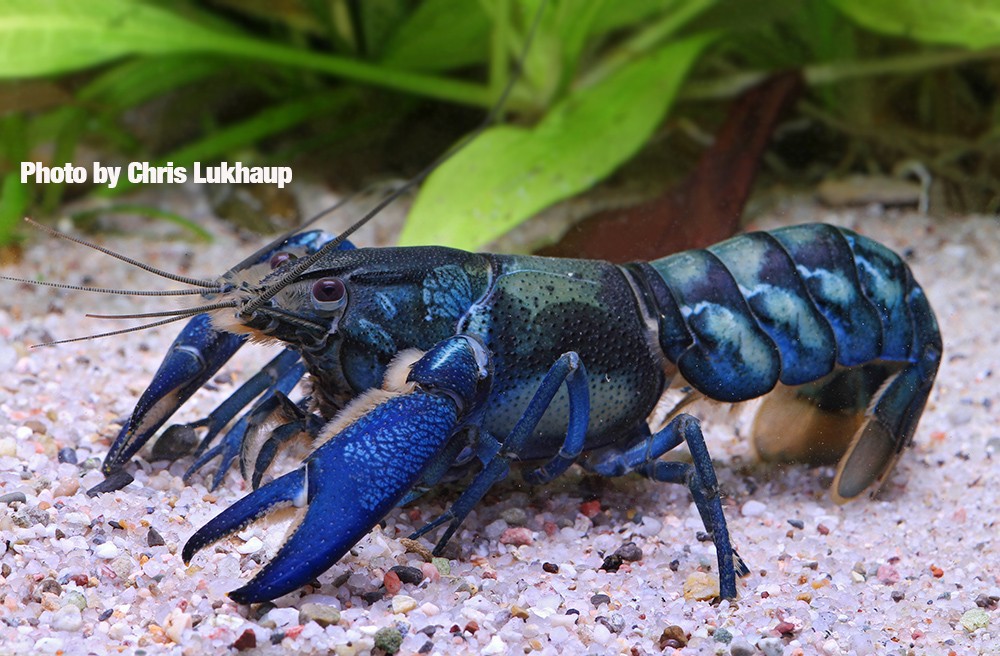
Cherax communis, the blue Papuan crayfish, was brought from Papua a few years ago and successfully propagated here. The animals reach a body length of up to 12 cm. An aquarium with an edge length of 80 cm or more is sufficient for a pair or a group of three. Cherax communis digs heavily and eats fine plants.

Despite its martial name, Cherax destructor is a peaceful fellow. The yabby originates from Australia. The animals grow to a length of 15 to 20 cm (measured without claws). An aquarium of 100 cm or more is acceptable for a pair or a small group of two females and one male. As the yabbies are rather solitary, the aquarium must be very well structured. Plants are eaten and the animals dig very eagerly.
Cherax snowden - Orange Tip Fire Crab
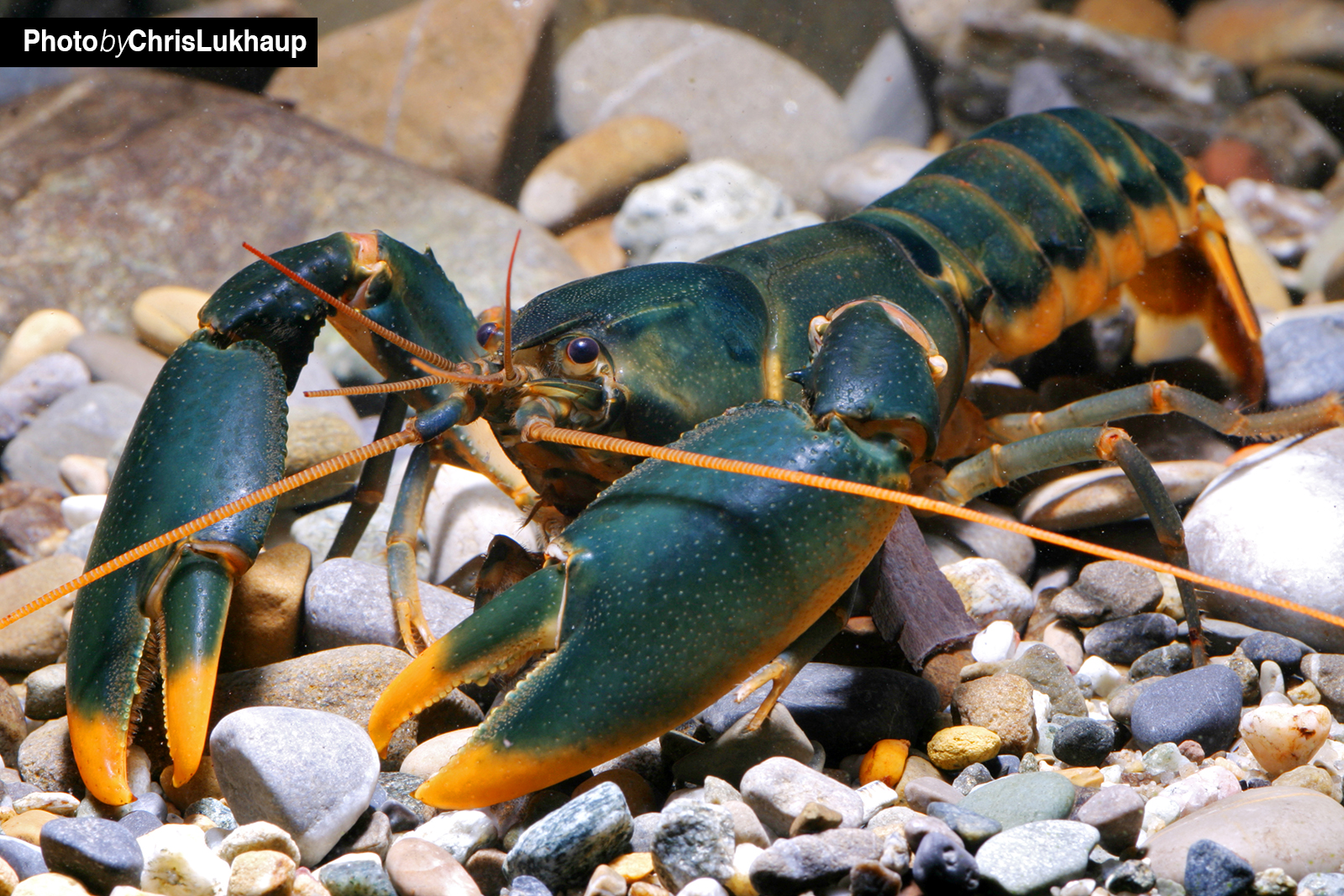
The Papuan Fire Crab, also known as Orange Tip, was previously thought to be a colour variant of Cherax holthuisi, but it is now clear that it is a new species, which has now been described as Cherax snowden. There is also a greenish colour variety of this crayfish. Measured without claws, the animals grow to a length of 9 to 12 cm. They do not eat plants and do not dig very much. A pair or a small group can be kept in an aquarium of 80 litres or more.
Cherax snowden "Irianto Red" - Sunshine Apricot Crab
The Sunshine Apricot Crayfish from Papua is better known as Irianto Red. It belongs to the still recently described species Cherax snowden Lukhaup et al., 2015. Its intense orange-red to bright red colouration makes it extremely attractive. The Irianto Red reaches a body length of up to 12-14 cm. It is not a strong herbivore, nor does it dig as much as other crayfish if it finds good hiding places. For one male and one female or for a small group with a surplus of females, an aquarium with an edge length of 80 cm or more is suitable.
Cherax sp. Blue Moon - Dark Blue Crayfish
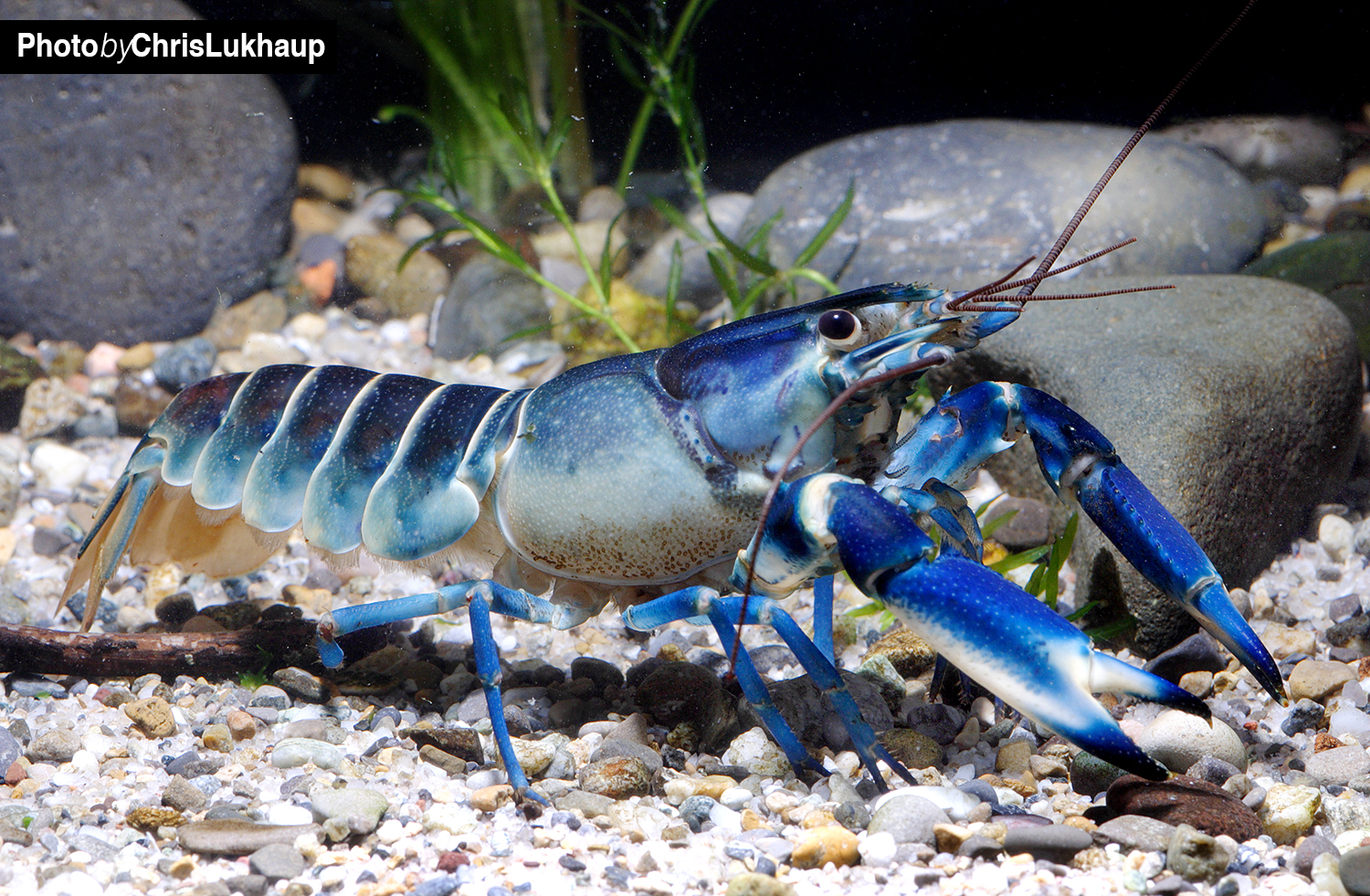
The so far scientifically undescribed Cherax sp. Blue Moon also comes from Papua. The males have white claw bladders, which are missing in the females. With a body length of 12 to 15 cm (without claws) it becomes quite imposing. The aquarium should measure 80 cm or more for a pair or small group. The Blue Moon is suitable for planted tanks because it does not dig heavily and does not eat plants.
Cherax sp. Blue Moon Snakeskin - Dark blue snakeskin crayfish
There is also a variant of the Cherax sp. "Blue Moon" called "Blue Moon Snakeskin". These beautifully marked Cherax crayfish also come from Papua, Indonesia. They grow to about 12-15 cm and stand out due to the snakeskin-like dark blue pattern on the otherwise light green to light blue carapace. The Snakeskin Blue Moon has a dark blue abdomen with light horizontal stripes and blue legs. The claws are white with blue markings and have deep indigo tips. The Blue Moon Snakeskin is not very interested in plants and is not conspicuous for excessive digging.
Cherax holthuisi - Apricot Crab
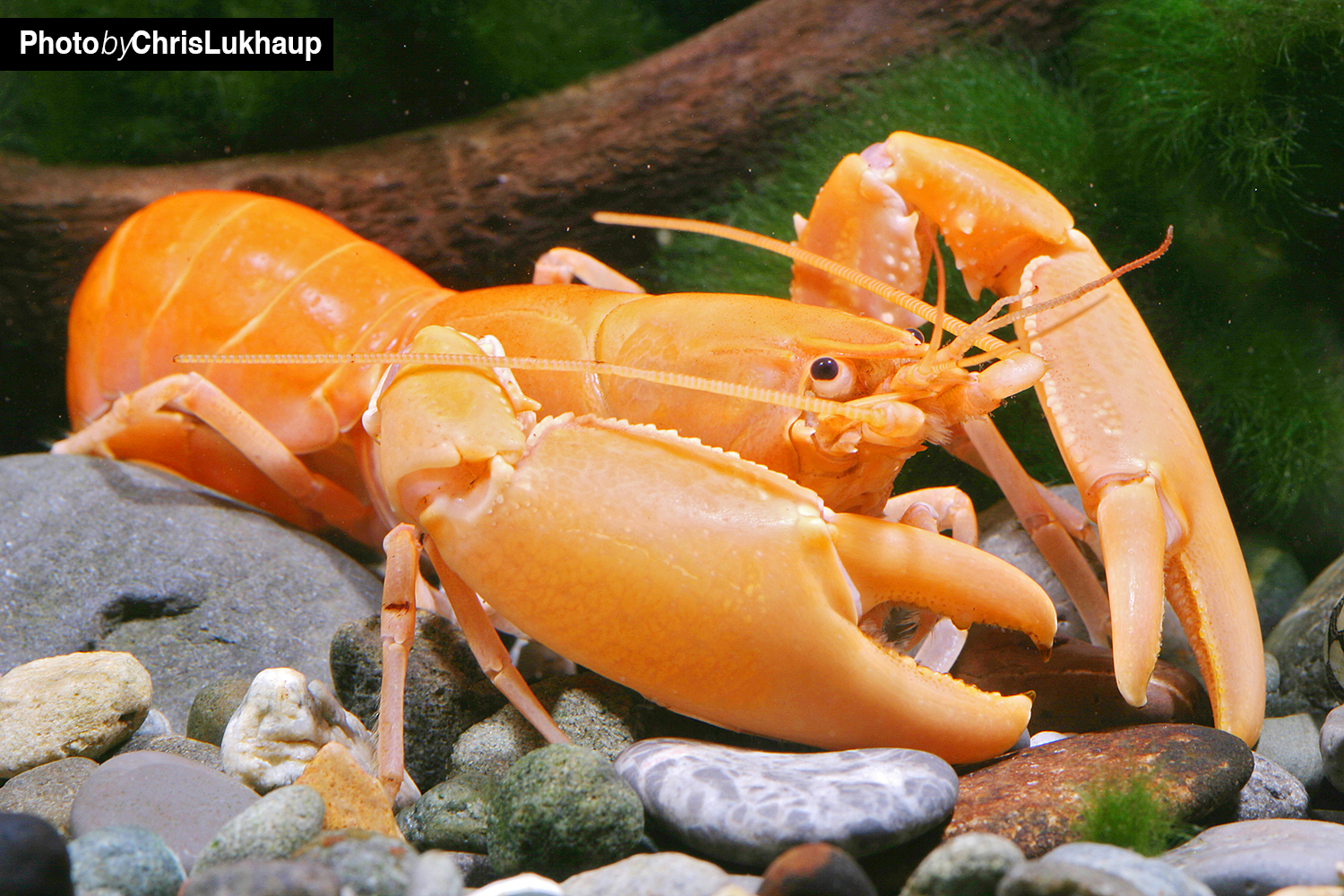
There are several colour varieties of Cherax holthuisi from Papua. The best known is the apricot-coloured variety, which is why this crayfish is often called apricot crayfish. Its size of up to 15 cm makes a tank of 80 to 100 litres necessary for keeping a pair or a small group. The apricot crayfish does not eat plants, does not dig and is considered very peaceful. Its small eyes indicate that it is a cave dweller.
Cherax holthuisi - Chocolate Apricot Crab
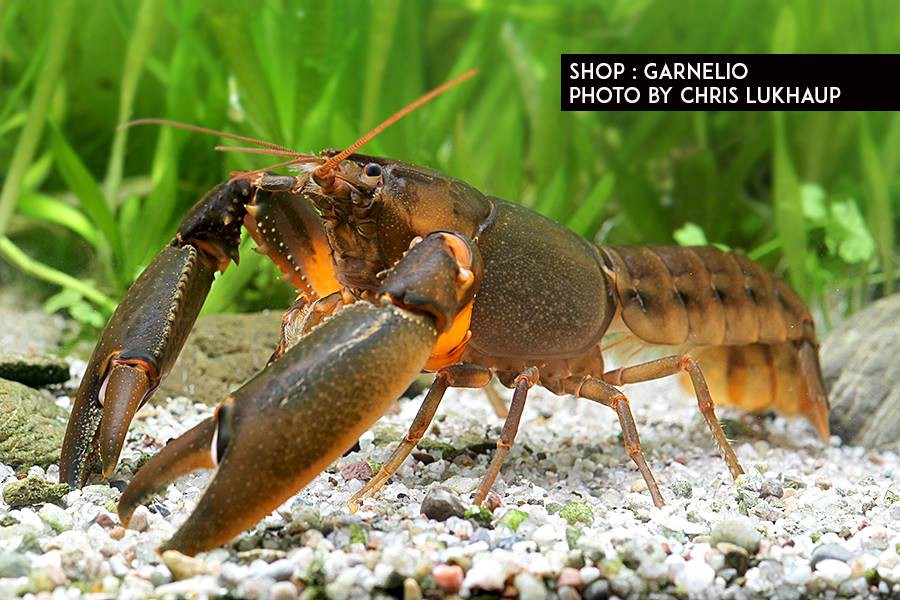
The chocolate apricot crayfish is also a colour variation of Cherax holthuisi from the Vogelkop Peninsula in Papua. Thanks to its orange markings, the otherwise predominantly brown crayfish looks as if it is glowing from within. With a body length of up to 15 cm, it is also a somewhat smaller species from the form group and thus fits into aquariums of 80 litres or more.
Cherax quadricarinatus - red scissor crab
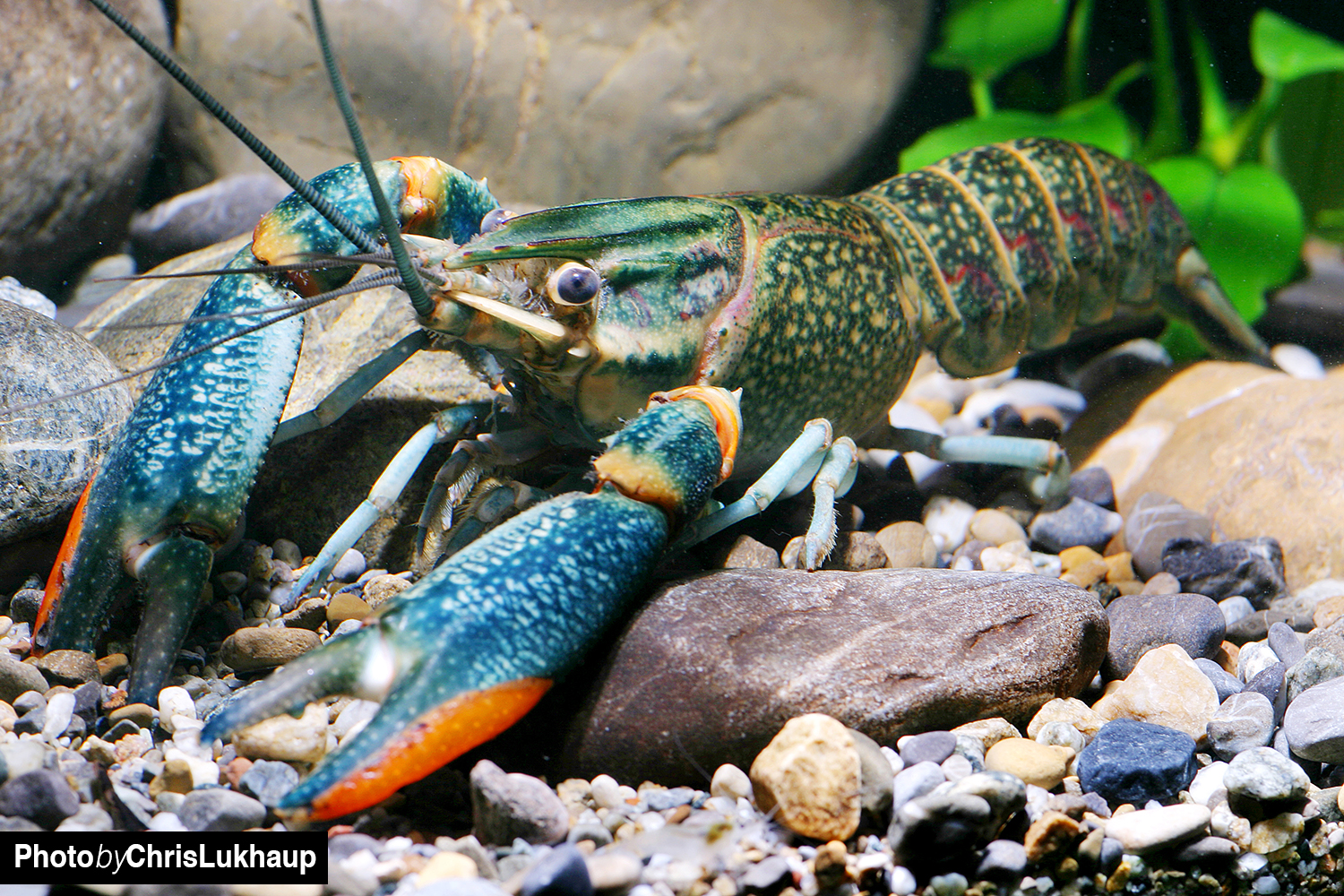
Cherax quadricarinatus comes from Australia. It reaches a body length of up to 25 cm and therefore needs a larger aquarium, from 100 litres for a single animal, from 240 litres for a pair or a small group of two females and one male. Cherax quadricarinatus are skilled hunters and like to catch fish. Plants are partly chewed off and eaten. The males have orange-red claw bladders, which the females lack.
Cherax pulcher - Blue Pink Crayfish
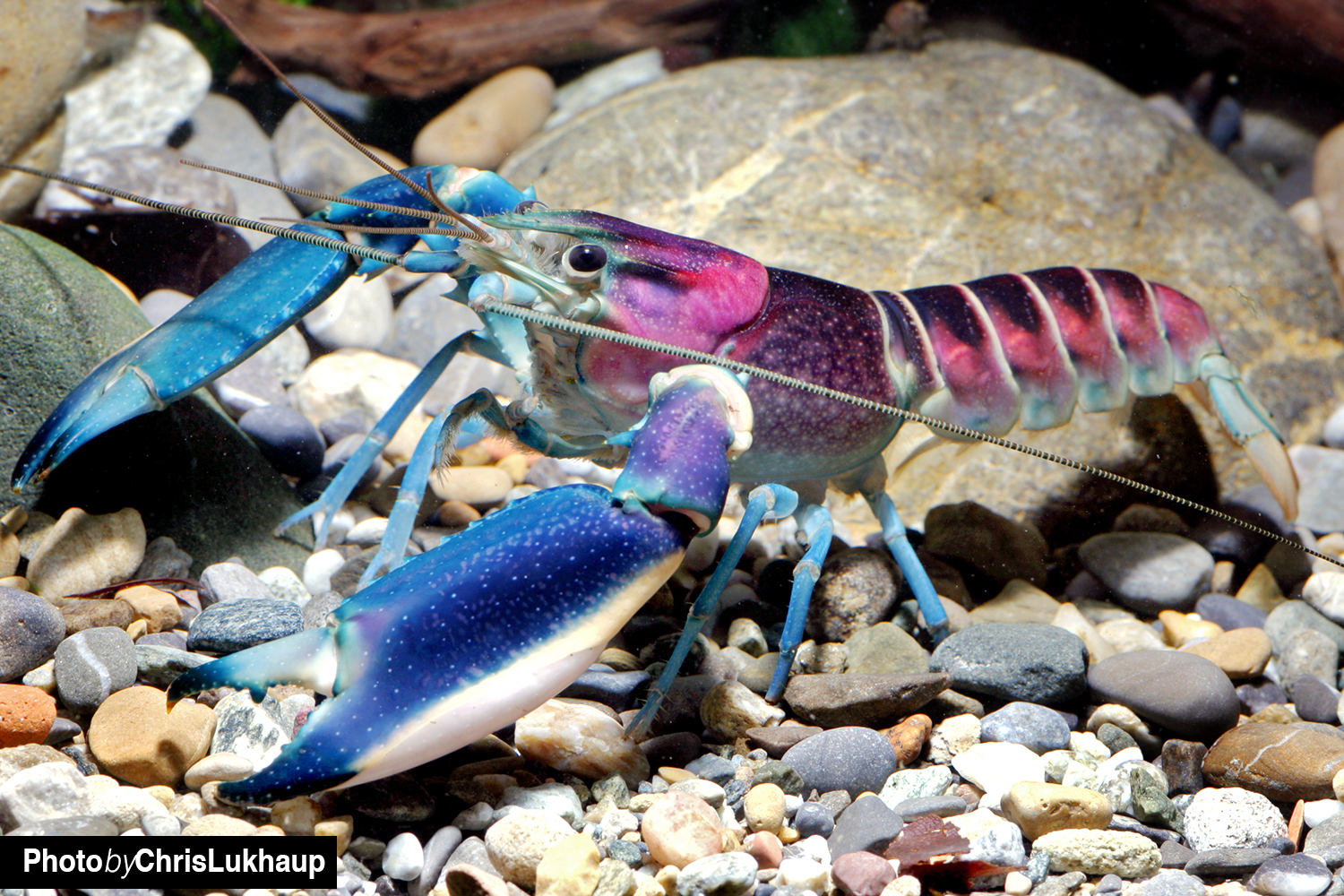
The recently described Cherax pulcher is also known by its old name Cherax sp. "Irian Jaya/Hoa Creek". It originates from Indonesia. With a body length of 12 to 13 cm this pretty crayfish is a rather small representative of its genus. A pair or a small group of two females and one male can be kept from 80 cm tank length. Cherax pulcher does not eat plants, but it digs very heavily. Very peaceful crayfish that can be kept together with smaller fish. The males have white claw bladders.
Cherax boesemani - Red Papuan Crayfish
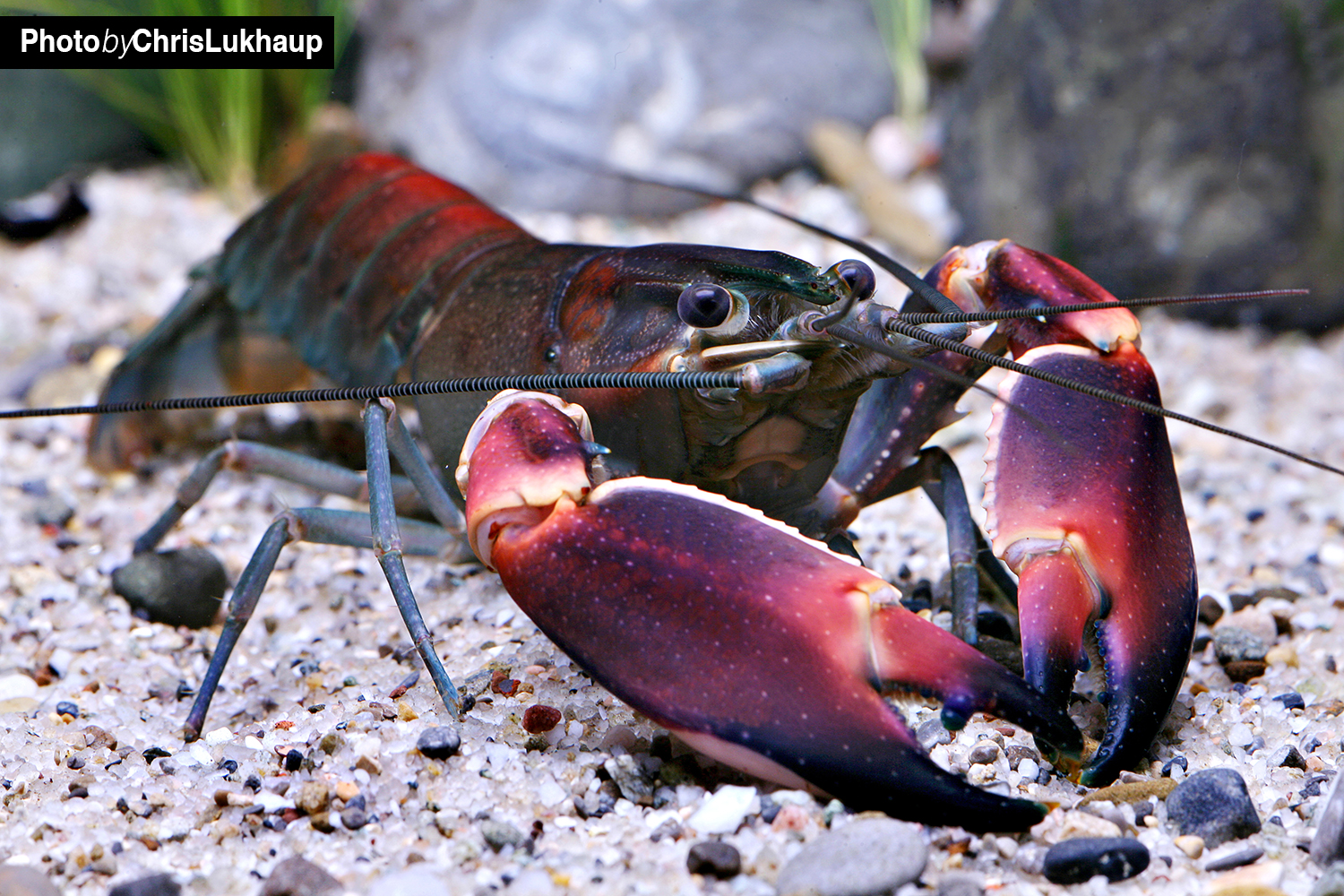
The Red Papuan Crayfish, Cherax boesemani, also known as Red Brick, also comes from Papua. With a body length of up to 15 cm, it is one of the larger members of its genus, so a pair or a small group of two females and one male needs a relatively large aquarium of 120 litres or more. The Red Brick hardly touches plants and fish, and it does not dig very much. Sexually mature males can be easily recognised by their light-coloured claw blisters, which are missing on females and juveniles
.
Cherax boesemani - Blue Papuan Crayfish
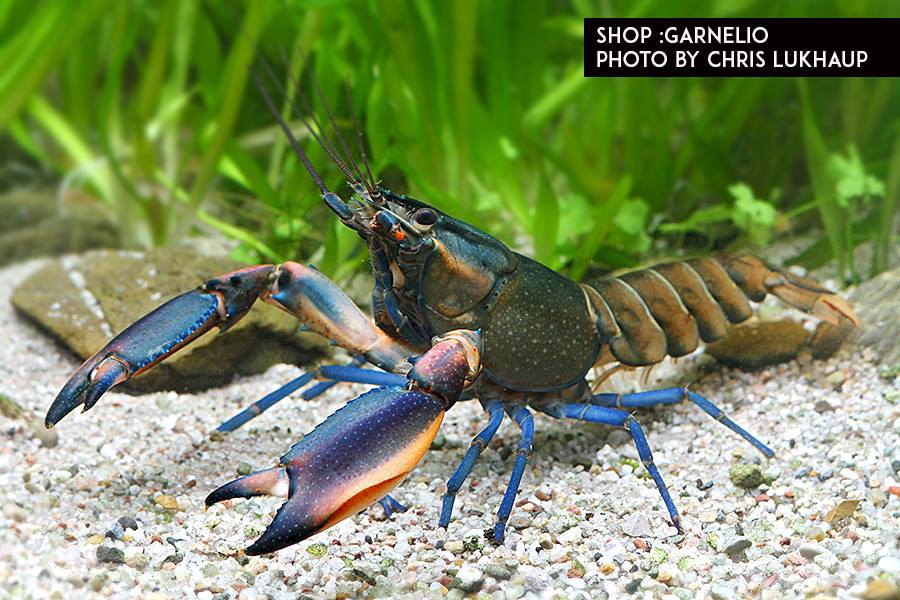
The blue colour form of Cherax boesemani, the Blue Papuan Crayfish, also comes from Papua/Indonesia. It has a great colouration, from dark blue-black to bright orange, purple, blue and orange-brown. With a body length of up to 12 cm it is also rather medium-sized, a pair fits into an aquarium of 80 to 100 cm. The Blue Papuan Crayfish is an active digger and should therefore be kept in an appropriately set up aquarium.
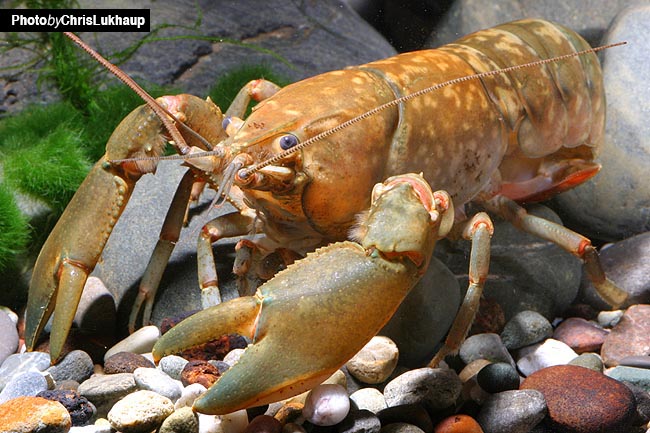
In the hobby you will also find Cherax cf. monticola, of which there are also several varieties. They are also very peaceful, hardly ever dig and do not go near plants. This 12 to 15 cm large crayfish also needs an aquarium of 80 cm and more for a pair or a small group.
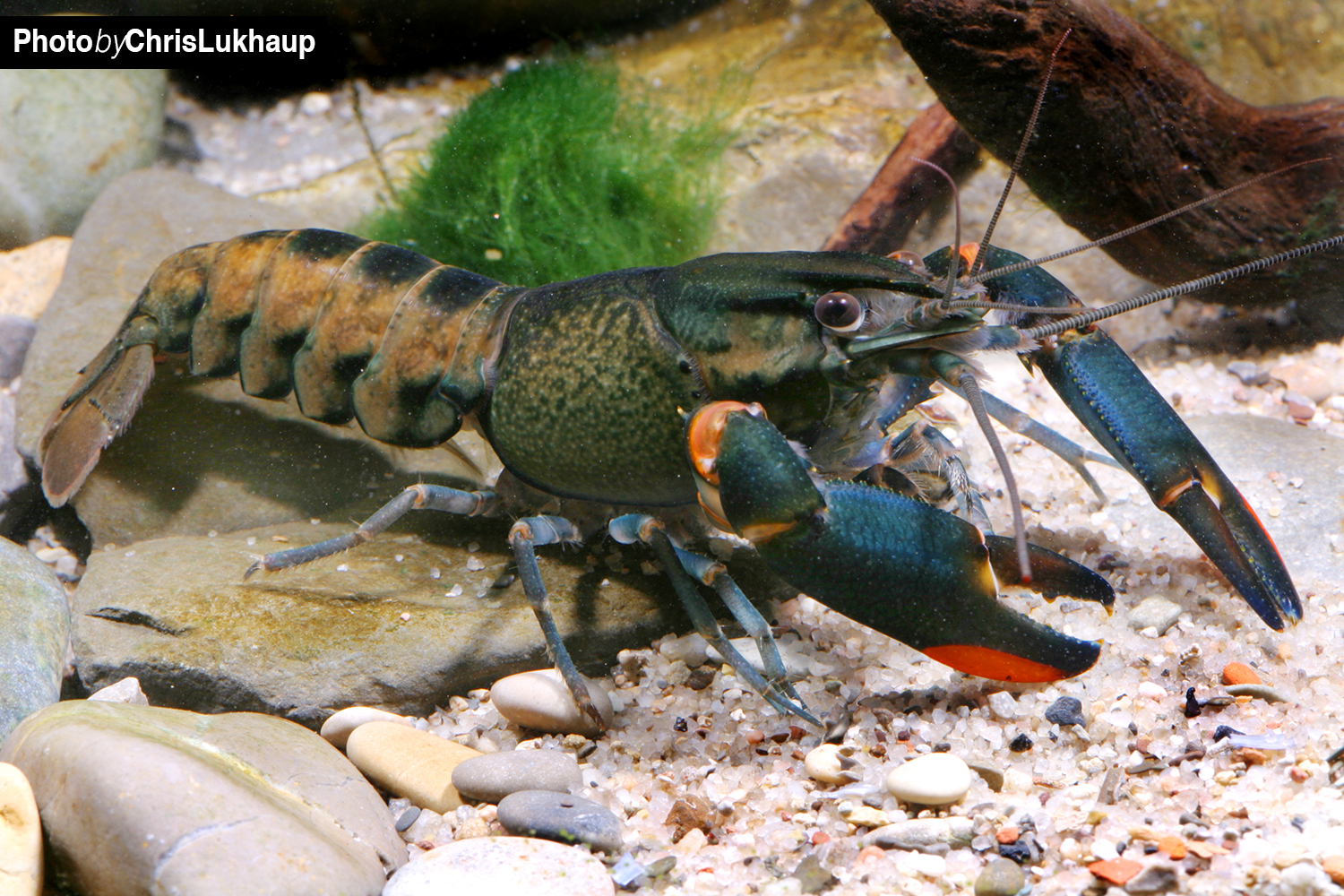
Cherax lorentzi is another colourful crayfish from Papua that remains relatively small at 10 to 12 cm and is therefore suitable for keeping in pairs in an 80 to 100 cm tank. It occasionally eats plants and likes to dig.
Cherax peknyi - Tiger or Zebra Crab
Cherax peknyi from Papua is also known as the tiger or zebra crayfish. The bright, more or less broad transverse stripes on the abdominal segments are striking and give it its trivial name. The animals grow up to 12 cm long (measured without claws) and can therefore also be kept as a pair or small group from 80 to 100 cm. They eat plants only occasionally and do not dig very intensively.
Cherax peknyi "Blue Claw" - Blue Claw Tiger Crab
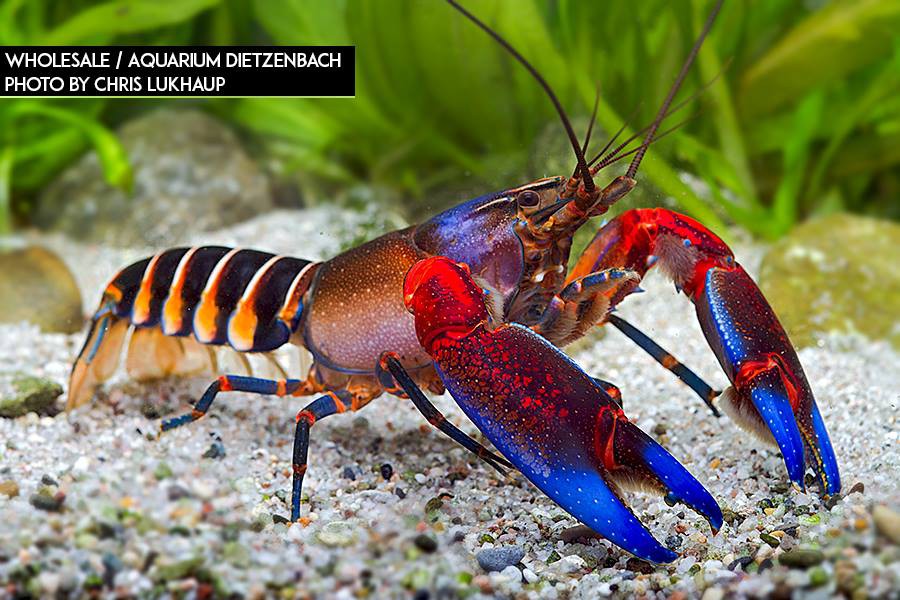
Cherax peknyi "Blue Claw" also comes from Papua, but from a different river than the well-known tiger crayfish. This variety stands out due to its beautiful bright blue claw fingers and blue head area. The claw arms are intensely light red, the claws themselves rather dark red mixed with dark blue. Like the tiger crayfish, the blue claw crayfish also has bright narrow transverse stripes on its abdominal segments. The Blue Claw grows to a length of 12-14 cm. A pair can be kept in an aquarium with an edge length of 80 cm or more. They occasionally eat plants, their digging activities are kept within limits.
Cherax alyciae "Blue Kong" - Blue Kong Crayfish
What was formerly known as the dark blue variant of Cherax peknyi now has a new name: The Blue Kong is scientifically called Cherax alyciae since 2018. It was described as a new species by Chris Lukhaup. The Blue Kong also comes from a river in Papua. The Blue Kong crayfish has bright blue claws and a similarly coloured carapace. Towards the tail fan and on the abdomen the blue becomes dark and intense. The claw arms have orange joints. The transverse stripes on the abdominal segments of the Blue Kong are a light blue. With a body length of up to 14 cm, the Blue Kong is rather medium-sized. An aquarium of 80 cm or more is suitable for a pair. Robust, fast-growing plants have a good chance of not being eaten. Cherax alyciae "Blue Kong" is not known to be a very strong digger.
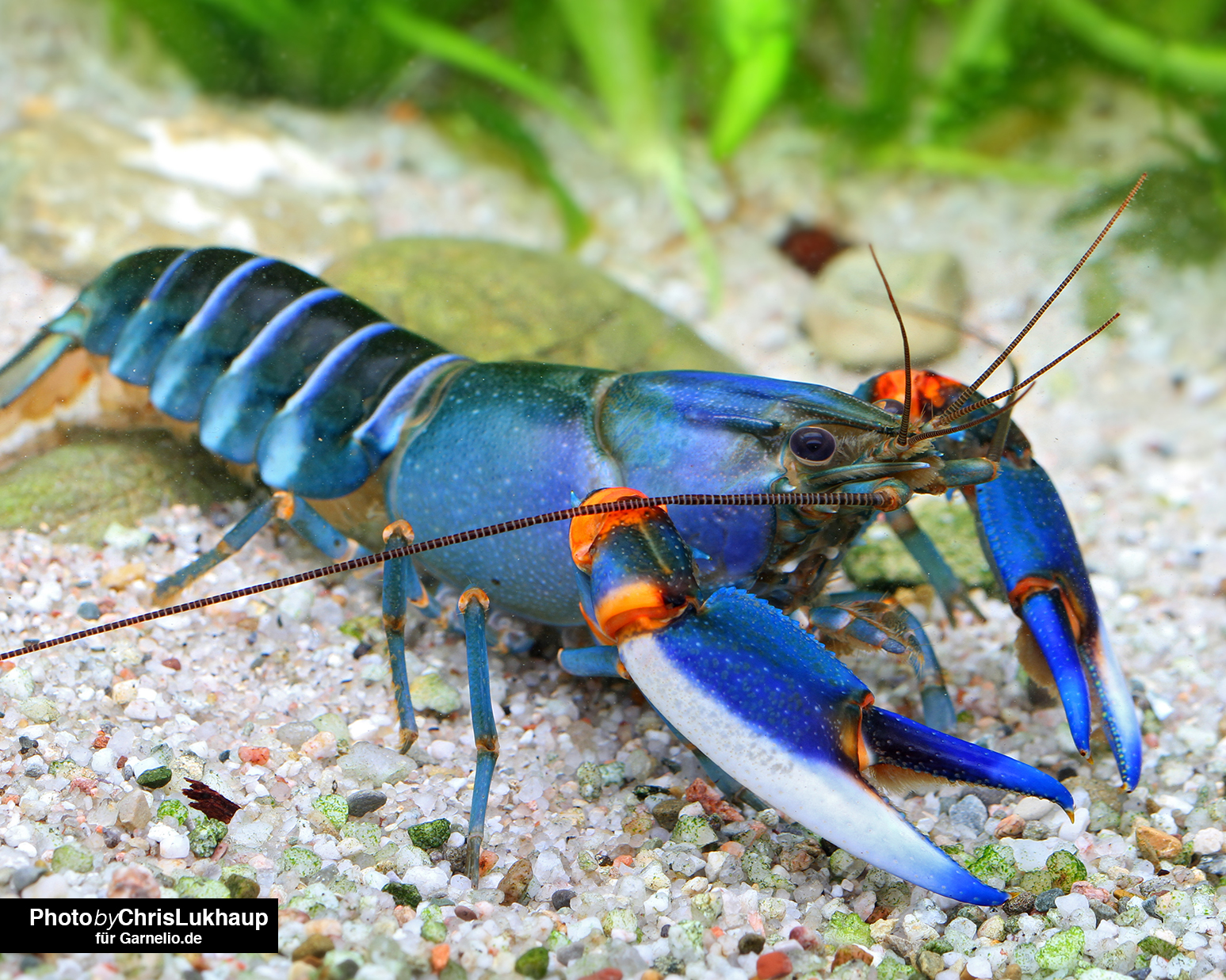
Roland Emmenlauer: 5 common mistakes in keeping Cherax!

Roland Emmenlauer, author of the e-book"Crayfish Aquarium for Beginners", has been dealing with crayfish with crayfish since his early childhood. Roland is also the founder of the successful groups Nanoaquarium for Beginners and the group Cambarellus, Cherax, Procambarus on Facebook. There he repeatedly encounters the same mistakes that are often made when keeping Cherax species in a crayfish aquarium. He was kind enough to summarise them for the GarnelioBlog. Thank you again at this point!
Problem No. 1 - Lack of oxygen in the cherax tank.
Make sure there is enough oxygen in the tank. Unlike other aquatic animals, crayfish do not congregate at the water surface when the O2 in the tank becomes scarce. Usually they just stay where they are and die. O2 deficiency in the aquarium can have various causes. Usually several of them come together, such as too dense plant stocking. Plants breathe O2 themselves in the dark. If, in addition, there are many fellow inhabitants in the community tank, crayfish typically die towards morning.
Other reasons: Filter stops. (Too) warm water. Cherax tanks need a powerful filter. If you don't have one, a moderately powered bubbling stone provides safety.
Problem No. 2 - No sensible diet!
Feed appropriately. In contrast to North American cambarids, a cherax eats mainly what falls from trees or bushes into the water and grows near the shore or submerged. For example, autumn leaves and greens as well as fresh nettles and dandelions. Autumn leaves such as beech or oak, scalded, are a "must" in every cherax tank, they are eaten in large quantities. In addition, humic acids from the leaves have a mild disinfecting effect. If you don't have an organic garden, you can offer organic frozen spinach, peas and broccoli. My animals like this very much. My adult (sexually mature, adult) crayfish do not get ready-made food. Ready-made food that is not eaten has to be vacuumed up. Crayfish provide their own protein supply very well if you give them Planorbella duryi post horn snails in the tank. Meat from warm-blooded vertebrates can lead to accelerated growth in crustaceans and subsequently to moulting problems. Too much food is, in my estimation, one of the most common causes of death in the aquarium. An adult cherax is usually an energy saver that needs very little food.
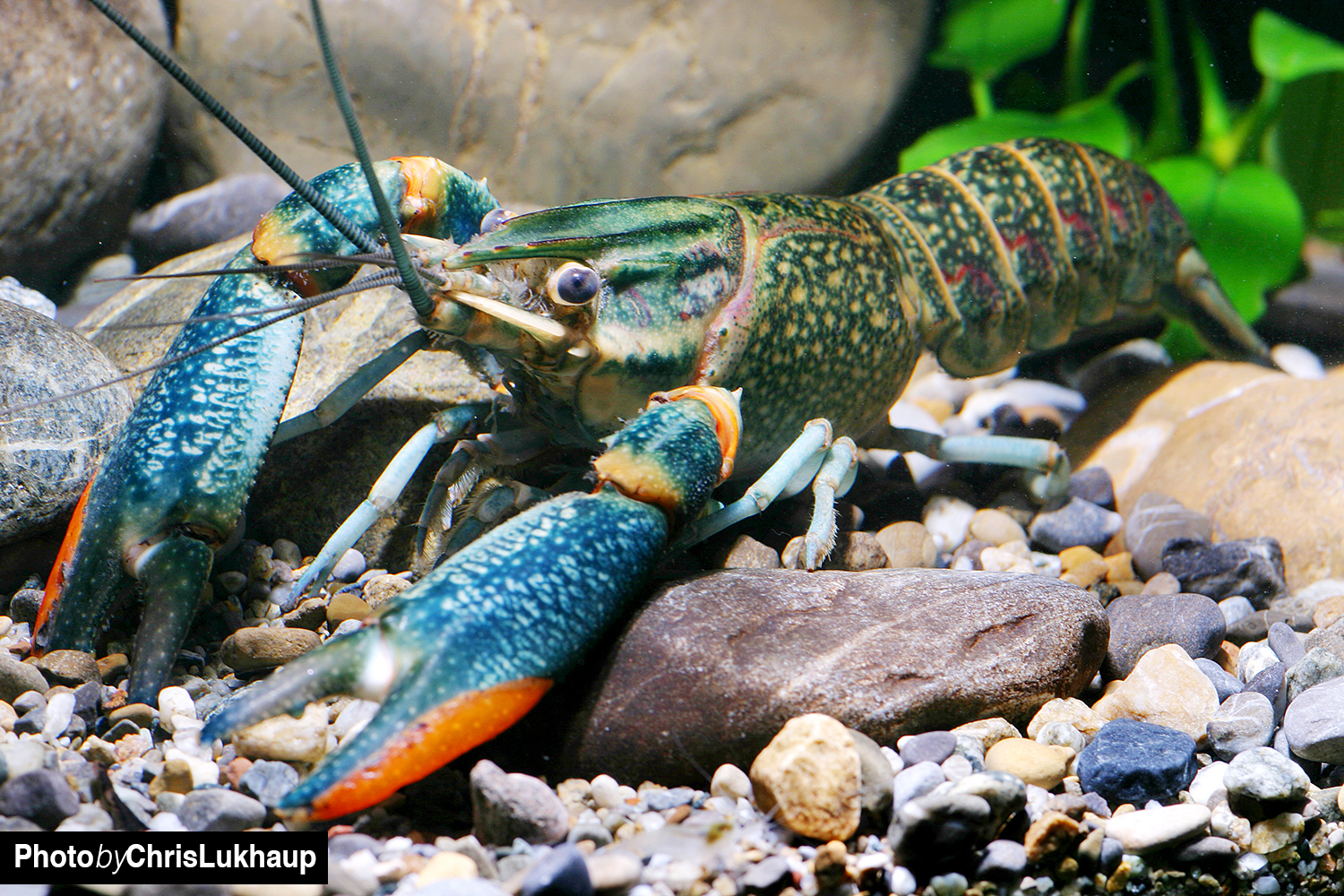
Problem No. 3 - Mineral deficiency!
Make sure there are enough minerals in the water. After moulting, a cherax draws about 90% minerals from the water to harden its shell. The remaining 10% is stored as stomach stones, which serve as an initial supply to stabilise its respiratory organs. With minerals, the rule is "supply before quantity". So a low KH in a large tank is at least as good as a high KH in a small tank. Water-soluble calcium is obligatory. Fresh minerals come into the tank through water changes. If this is not enough, you can add more or less travertine or Asian perforated stones (porous!) to the tank, depending on the stocking, to harden the water. Cuttlefish and eggshells are more homeopathic.

Problem No. 4 - Crayfish tank was not escape-proof!
Crayfish are born escape kings. They will use every unsecured loophole to escape. Some are very persistent and develop amazing strength, even lifting the lid to explore the surroundings or to find a sexually mature partner. With wet gills, the animals can cover amazing distances. If you are lucky and have a cat, you might find the fugitive in the cat's drinking bowl. Most of the time, however, the adventure does not end well. If the animals don't die from drought, they die from drowning. If you don't know any better, you immediately put the pince-nez back into the bowl, which inevitably leads to death. The following procedure is better: Place a bowl with two fingers of aquarium water. Place a matchbox on one side so that the bowl is slightly slanted. Place the crayfish upright in the middle of the bowl so that it is half covered with water. If it moves a little bit, especially in the area of the mouth parts (water is also fanned from there to the gills) - just wait. It decides for itself when it wants to go into deeper water. Cover the bowl. If it does not move, turn the crayfish onto its back so that any air in the gill chamber can escape. (The gill chamber is located on both sides of the carapace = head chest piece). Then put the crayfish back into the water upright and half-covered, as described above. Patience! Sometimes it takes a long time. If it is not completely dry, it will come back to life. It should only be returned to the aquarium when it is in top shape again!
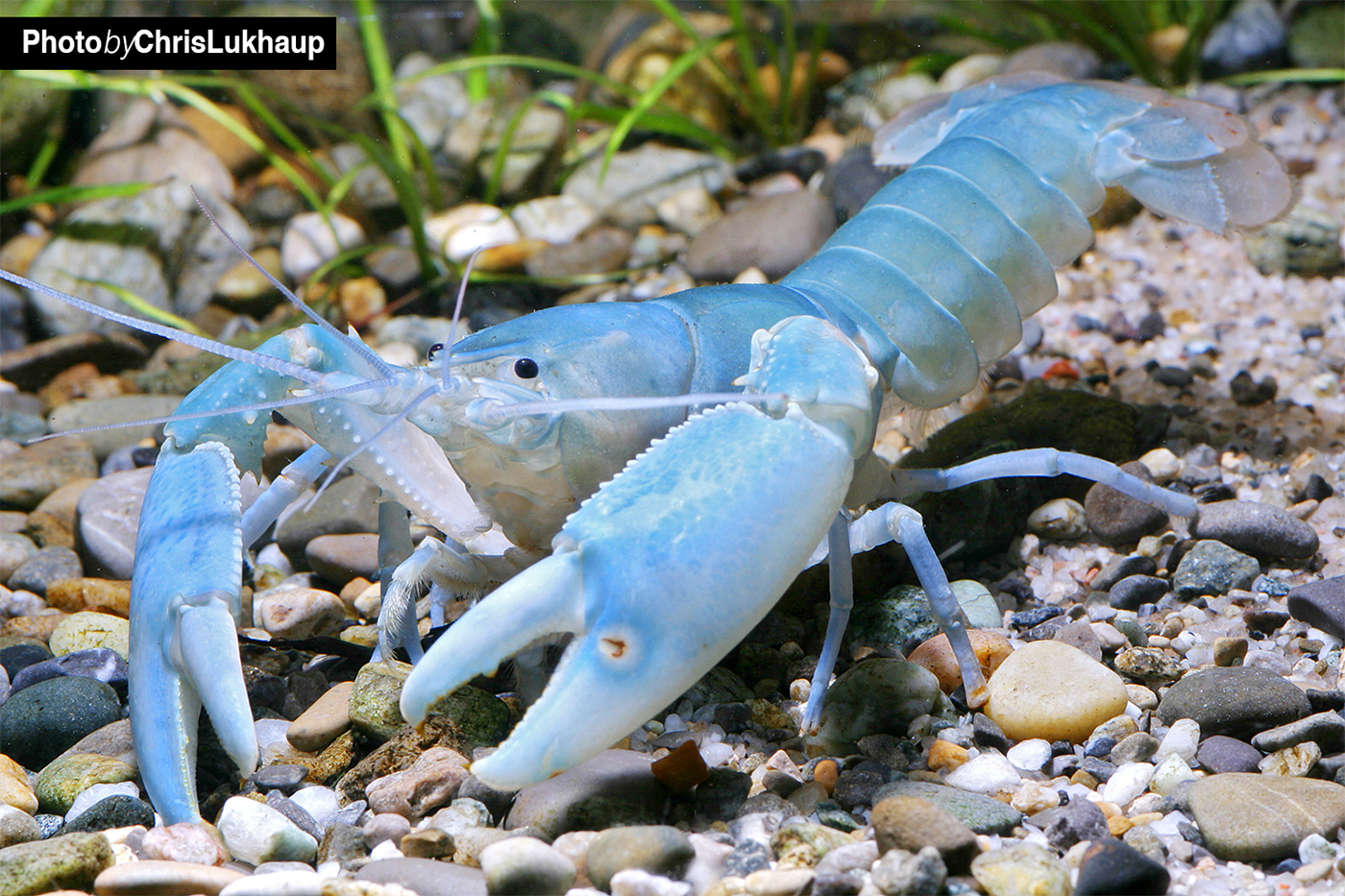
Problem no. 5 - Aquarium equipment collapses!
Secure inventory against collapse. If you want to put heavy stones or large roots into the aquarium, it is advisable to place an acrylic disc under this object on the tank glass - against point loads on the aquarium (danger of breakage). Wooden piles or mountains with many caves and niches are very popular with pinchers. Since they are passionate interior decorators and like to design their tanks according to their own taste and dig as if they were paid for it, everything must be well secured against collapse. I keep hearing and reading about crustaceans found trapped that did not survive. A well-structured facility makes the pinchers happier. They need occupation and retreat space.

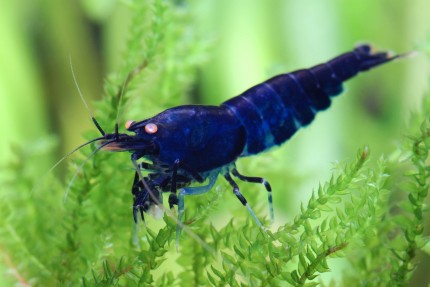
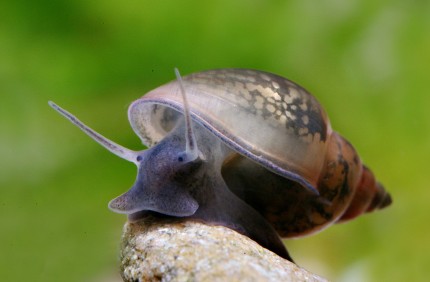
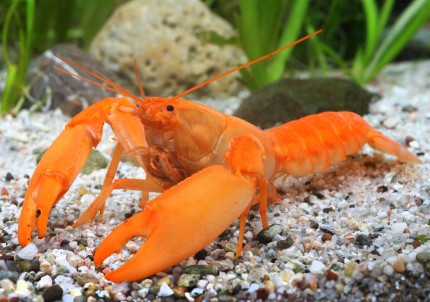
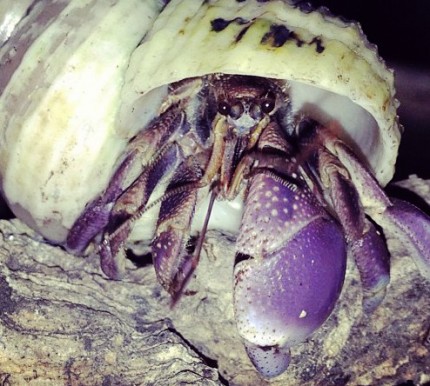
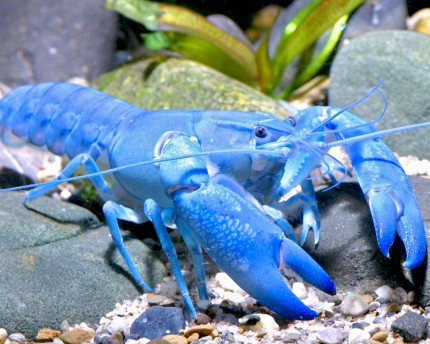
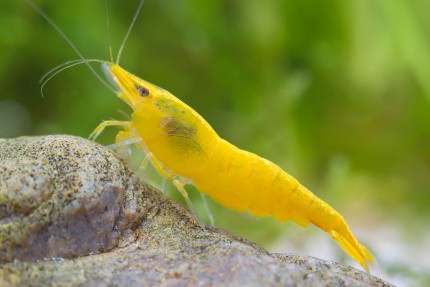
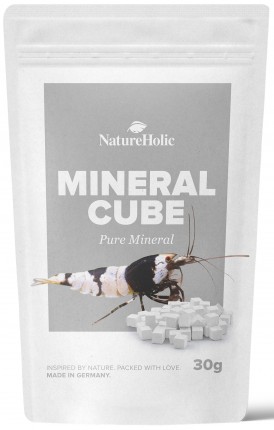
Wow
Absoluter Wahnsinn euer Blog, wirklich sehr gut gemacht! Weiter so!!
Vielen dank
Vielen dank für den sehr Informativen Blog über Cherax, habe mir schon seit längeren überlegt mir ein Cheraxbecken einzurichten. Dank euren Blog habe ich genug wissen um direkt alles perfekt umzusetzten. Dankeschön
Sehr cool!
Cooler blog.:D
Toll
habe noch NIE so tolle Fotos meiner Lieblinge gesehen TRAUMHAFT